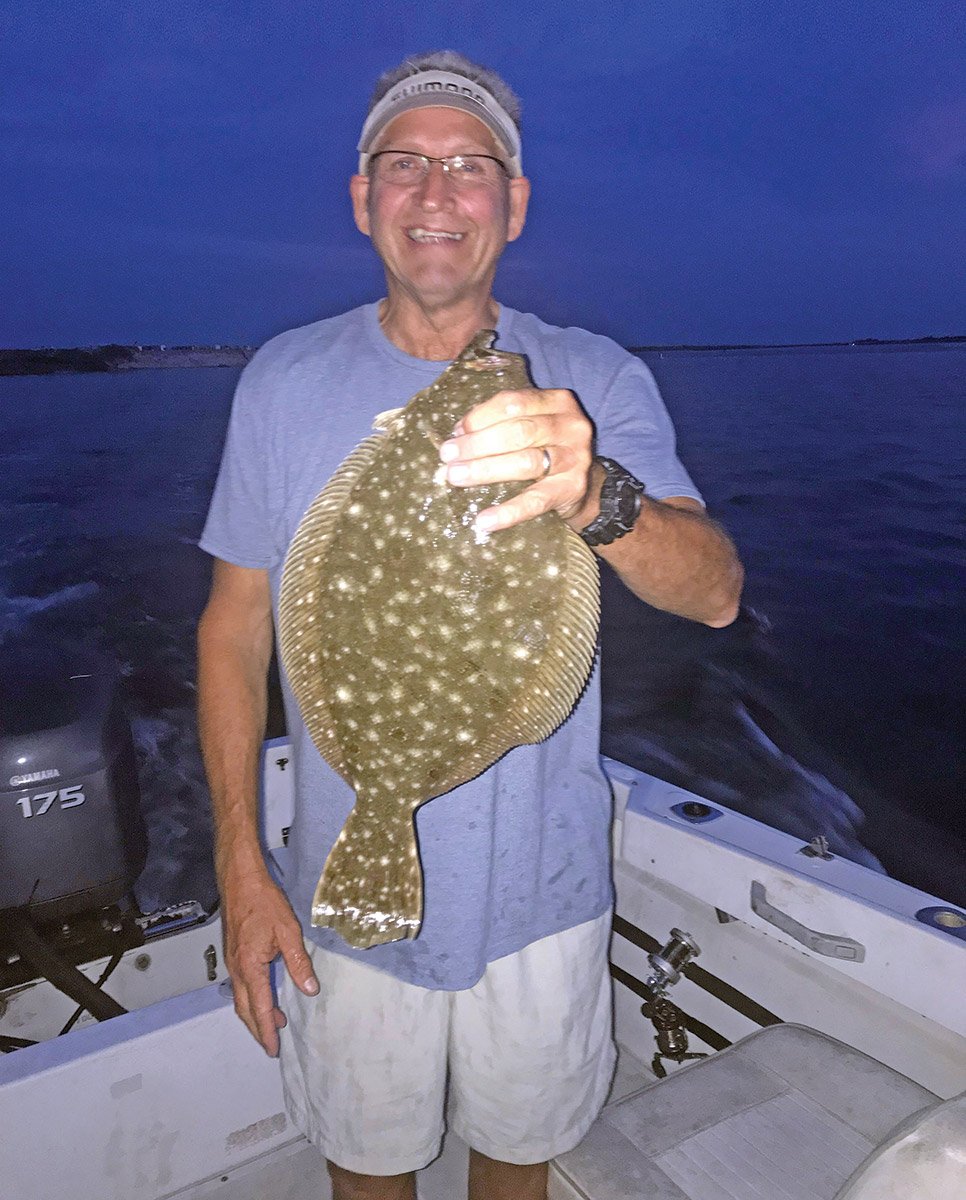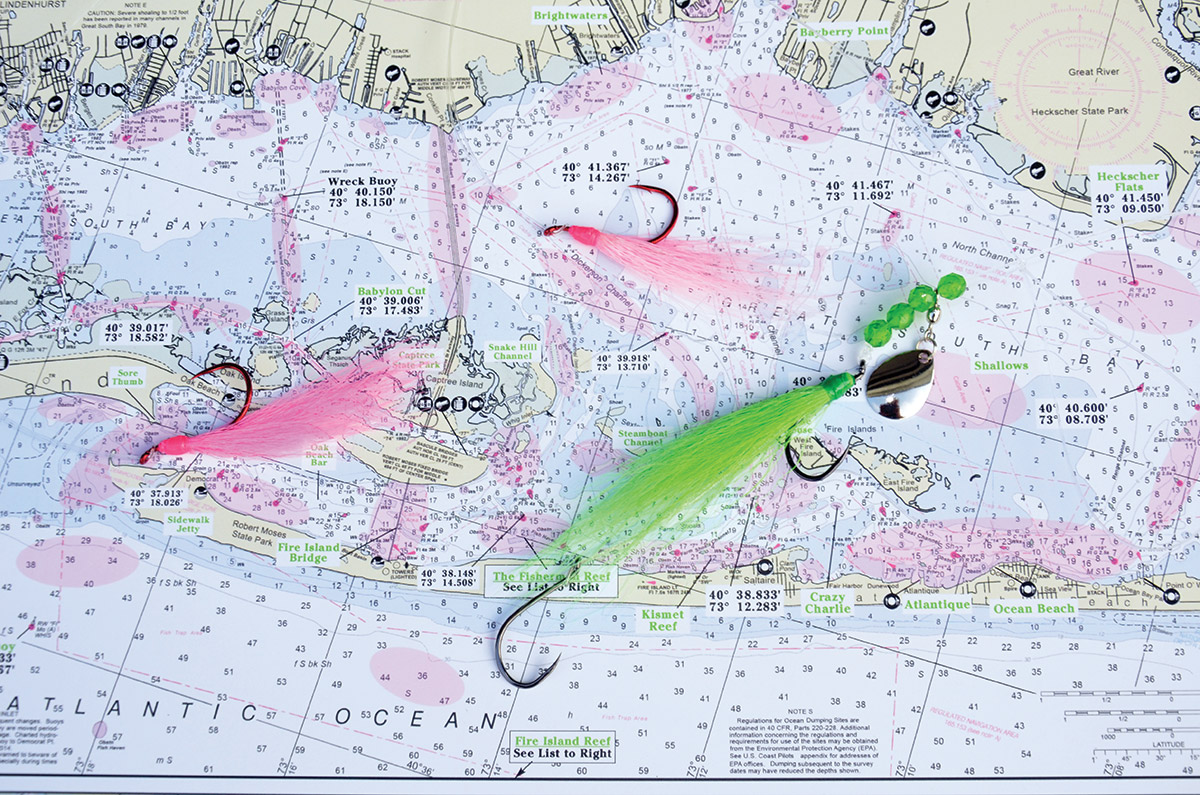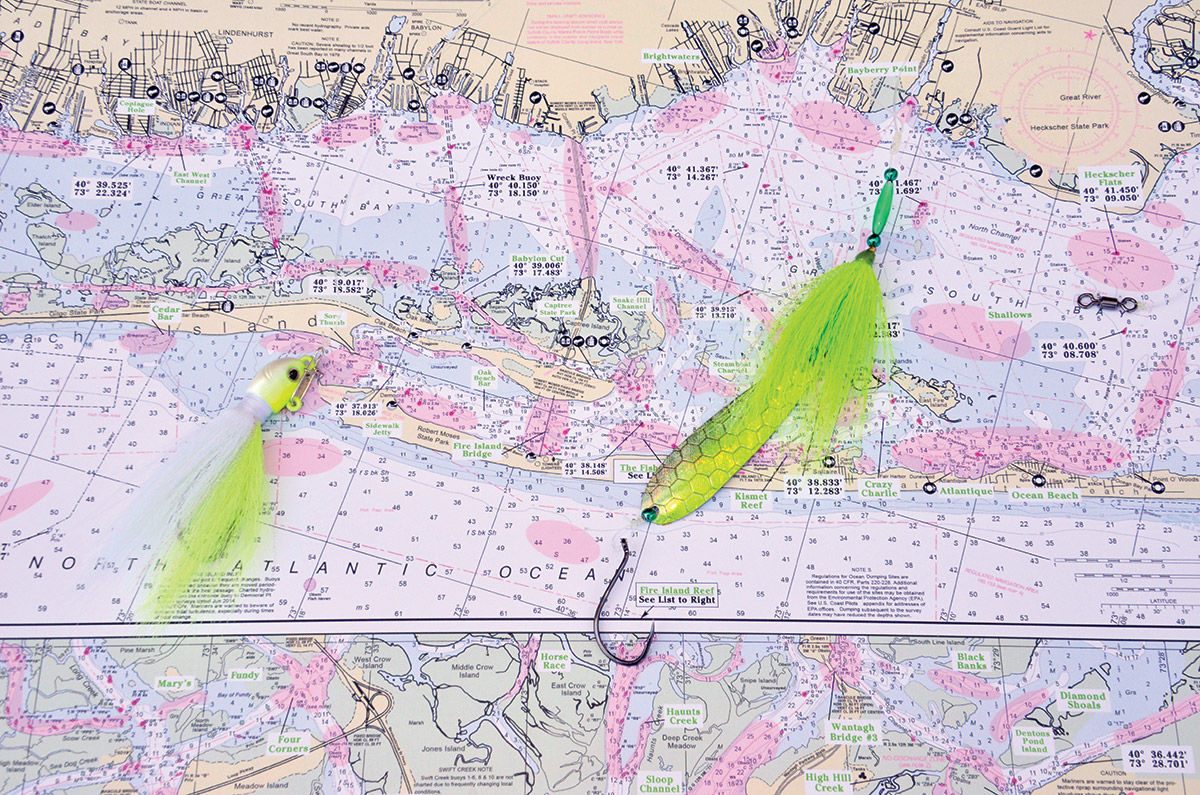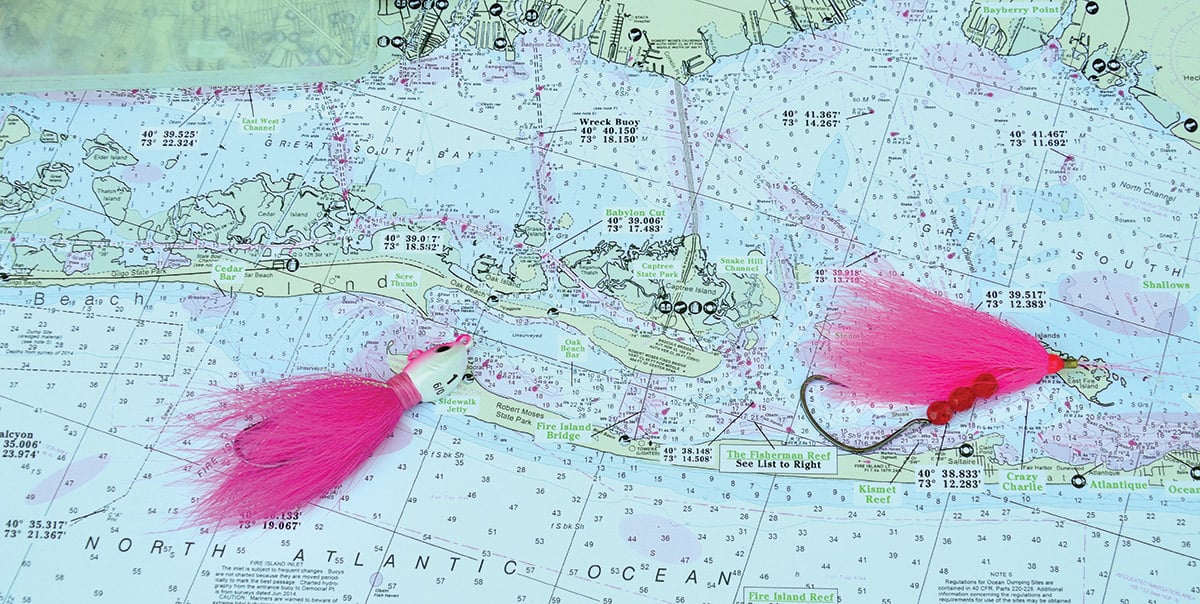
Spice up your fishing by experimenting with some of these other rigs and you just might discover a new favorite.
There used to be a time when if you wanted to catch fluke, you picked up a pack of spearing and squid and headed out. When you got to the fishing grounds, the rig consisted of a dropper loop for the sinker and another dropper a foot above for the fluke hook. Simple set up, and it worked great. In today’s world however, there is no end in sight for fluke rigs used in our waters. If you love catching fluke, let’s take a look at the old stand-by rigs, plus a few relative newcomers to the scene that I have had success with.
Back to Basics
The basic fluke rig of years gone by was a simple one consisting of a 36-inch snelled 2/0 to 3/0 J-hook attached to a three-way swivel. The sinker was attached with a loop from line that was attached to another eye of the three-way. On the hook was either a live killie, strip of squid or spearing, or any combination of the above.
The next phase was the two-hook bucktail rig. It consisted of the same 36-inch hook/leader, but in place of the sinker, a bucktail was added. The bucktail often would induce interest and if the fluke missed the bucktail, the trailing hook would be in line for his next meal.
Eventually, fishing just the bucktail itself became popular, and many anglers still rely on this approach. It was tipped with a live killie, long strip of squid or fish belly, or a large spearing. The key to the bucktail was to keep it hopping along the bottom. If you felt weight, you dropped back, then slowly just lifted the rod. All three of these rigging styles continue to account for good catches of fluke in Long Island waters.
Home Grown Fluke Rigs
I think almost every tackle shop on Long Island has a specialty fluke rig. Several that come to mind right off the bat are Combs in Amityville, Bob’s in Amity Harbor and Lindenhurst Bait and Tackle. Personally, there are four rigs that I rely on for my fluke fishing these days. The old stand-by bucktail featuring Berkley’s new Fusion jig, a simple bucktail and feathered teaser (Pop’s), a two-hook teaser rig from Bob’s and the newest of the bunch, Capt. Tom Cornicelli’s Bottom Feeder.

I did an article with Craig Burkhardt of Smith Point Bait and Tackle several years ago on fishing the bay for fluke. Not only did he wallop my behind on the catching, he introduced me to a simple fluke rig that really works. For this piece, although Craig has never named it, I am calling it Pop’s Fluke Rig as it was Craig’s dad that introduced the rig to Craig. It consists of a 4/0 Gamakatsu shiner hook, a feathered skirt and some beads fished 10 to 12 inches above a 3/4-to 1-ounce bucktail. The key to this rig is a moving bucktail. Keep it hopping, and a fluke will be tugging soon enough. On the bait end, spearing or squid is all you need.
Bob Rose at Bob’s Bait and Tackle has been offering fluke rigs in a wide array of styles. His two favorites are the two-hook hi-lo rig adorned with teasers and a double hook spinner rig for larger baits. I have yet to try the double hook model, but really like the two-hook hi-lo rig. This rig features two teaser hooks above a bucktail or sinker and allows you to offer a long squid strip on the top hook and a spearing or live killie on the lower teaser hook. The shorter shank hooks allow for quick hook-ups. The double-hook rig can be fished off of a 3-foot leader connected to a three-way swivel with a dropper loop or large snap for your sinker.

The newest rig on the block is the Bottom Feeder, custom tied by Capt. Tom Cornicelli of Back Bay Outfitters. When you first look at this rig, you might wonder if all of this hardware is a bit overdone and really necessary. The rig consists of a spoon/blade, beads and Mylar skirts. The rig is offered in two-hook models for larger baits or in a single hook version. The single hook rig is fished above a bucktail. The two hook rig is better fished off of a leader with a sinker at the terminal end. Personally, I prefer the single hook and bucktail set-up. The spoon comes in various colors and fish scale patterns, including one that closely imitates a spearing.
Fishing the rig is quite easy. Bait it up with your favorite fluke bait and drop it down. Keep the bucktail bouncing and wait for the feel of some added weight. For the two-hook model, a larger whole squid or mackerel strip works great. For this rig I prefer to allow it to slowly drag along the bottom. The sinker will stir up the bottom, while the larger bait will induce the strikes.

Closing Tips
There is no secret to catching fluke, but there are some small tricks I can offer to help up the score. First off, and I have seen this first hand in the shallows of Moriches Bay, larger fluke will often smother a bait before eating it. Fluke are aggressive predators and will attack in a manner you would not believe unless seen, but larger ones seem a little more cautious. When I feel weight, instead of setting the hook, simply drop back a few feet of line, and then slowly lift. If you feel a head shake or solid resistance, set the hook. If you miss the fish, keep your rig in place as fluke will often follow a bait and make a second attempt at it.
I love fishing bucktails for fluke. I have found, partly through my own experience, and the tutelage of Craig at Smith Point, the key is a moving bucktail. For this method, you want the bucktail close to the boat. Drop down, feel bottom, and then keep the rod tip bouncing, imparting an up and down motion. If you lose the bottom, reel up and drop down again. A spinning rod is a great tool for bucktailing fluke. I prefer a 7-foot rod rated for 10 to 17 pounds with a fast taper, matched to a good quality spinning reel in the 3500 or 4000 size class. Spool it with 10-pound braid finished off with a 15-pound fluorocarbon leader.
One last tip involves the netting of a fluke. Fluke have eyes on the top of their body, and cannot see downwards. Yes, they can sense movement, but cannot see it. When a fluke is approaching the boat, place the net in the water below the surface and have the angler guide the fish head first over the rim of the net and lift. Never try to net a fluke tail first. Big fluke especially have a knack for escaping the net when approached from behind.
Most fluke fans can point to one or two rigs that they gravitate to for all of their fluke fishing. Spice up your fishing by experimenting with some of these other rigs and you just might discover a new go-to rig that produces more or bigger summer flounder.




